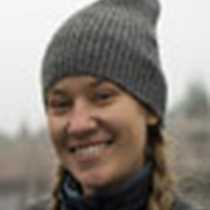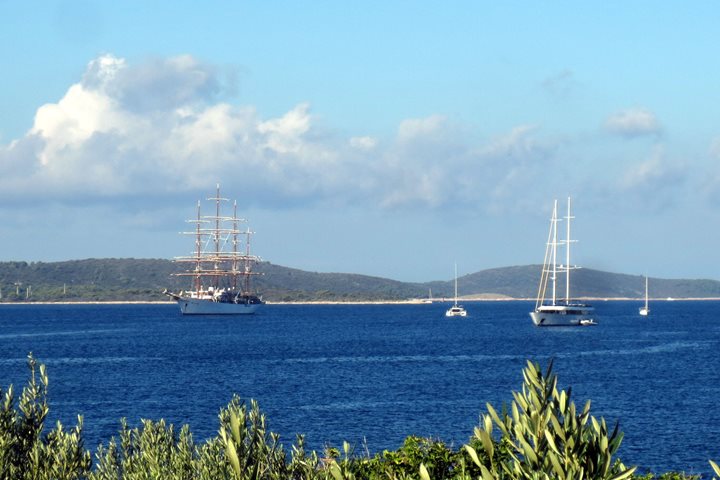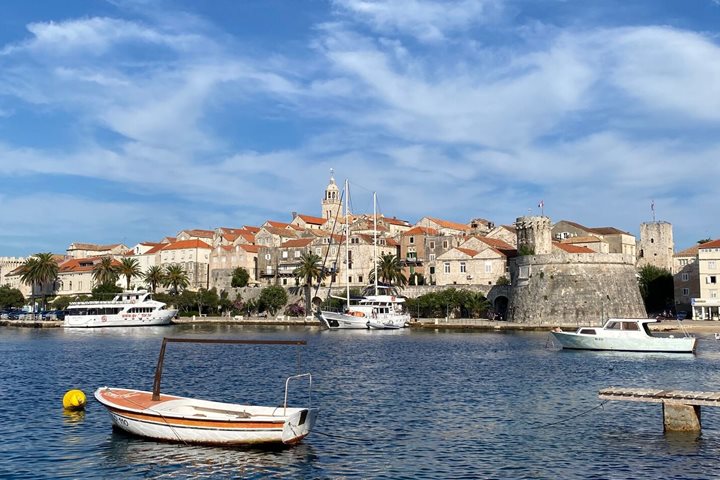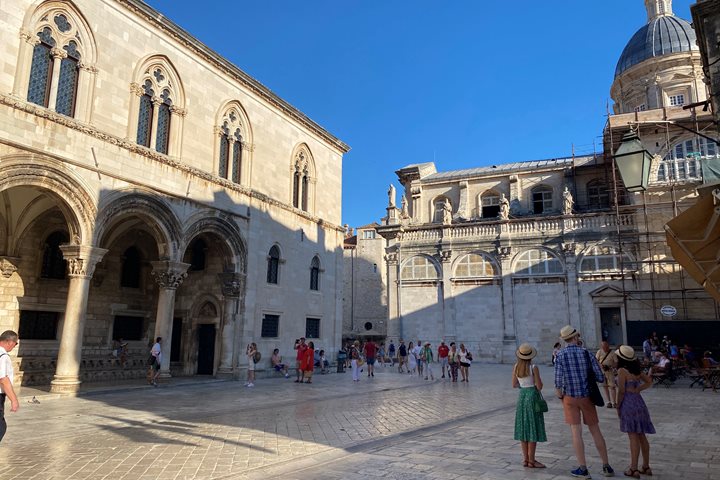The sun rose over the mountains of Albania at 5:30 a.m. We docked in the small port city of Sarandë, and boarded buses for our trip to the UNESCO World Heritage site of ancient Butrint. The lushly green Greek isle of Corfu is only 1.5 miles from the Albanian mainland. Albania was once isolated from the world for nearly half a century by an oppressive communist dictator, Enver Hoxha, who thought Stalin’s policies were too liberal! The residue of those repressive years was apparent as we drove along roads with many half-finished buildings. As we motored we occasionally spotted one of the many bunkers, Hoxha had ordered built. Imagine a country of 3.5 million ordered to produce something like 750 thousand concrete bunkers. There was often mass unemployment. During the communist period, our guide earned 70 euros a month as a secondary school teacher, but now the same position pays almost 400 euros – an increase but still well below other European countries. Today the average annual salary is about 4,000 dollars annually with approximately 15% unemployment. Tourism is becoming the number one industry.
We arrived at the beautiful ancient city of Butrint, and began our visit with an overview of the multiple civilizations which once lived here. The Italians under Mussolini’s direction, led by the distinguished archaeologist Luigi Ugolino, undertook the excavations here in the late 1920s. The layers of architectural history revealed are stunning from the 4th century Hellenistic B.C. structures to the 16th century Venetian castle. The Greek theater is surely one of the most impressive sights on the site as it is cut into the hillside, has quite good acoustics, and originally sat 2,500 in the audience. On the great stone wall, as we entered the theater, are ancient Greek inscriptions providing the names of owners who freed their slaves after they visited the sanctuary of the healing god Asclepius. The 6th century Byzantine baptistery has the most wonderful mosaic floor with floral designs and many animals. In the center of the baptistery were the remains of the immersion baptismal font. Much of the ancient city is at sea level but we climbed and reached the Venetian fortress. The Albanians have built quite a good museum at the top of the hill.
After leaving Butrint we returned to Sarandë and visited the Ottoman fortress built by Suleiman the Magnificent at the summit of the mountain. Musicians in traditional dress greeted us. One man in traditional dress played a simple flute-like panpipe that clearly had its roots in pre-history. There, we were treated to a sampling of delicious Albanian wines, beer, and assorted local appetizers. We then returned to the Sea Cloud for lunch! The captain made it possible for us to have a “plunge” swim off the Sea Cloud before lunch, and it was well appreciated.
After lunch, Tom Heffernan gave a lecture on Homer and the Odyssey, and John Frick provided a historic overview of the Sea Cloud from its inception until the present. Tonight we had the additional treat of being able to visit the historic staterooms built by Hutton & Post for themselves, their daughter Dina Merrill, and a few good friends!
We had cocktails in the beautiful evening sunshine and another fine dinner. What a wonderfully full day. Tonight we sail on to Greece and Ithaca.









